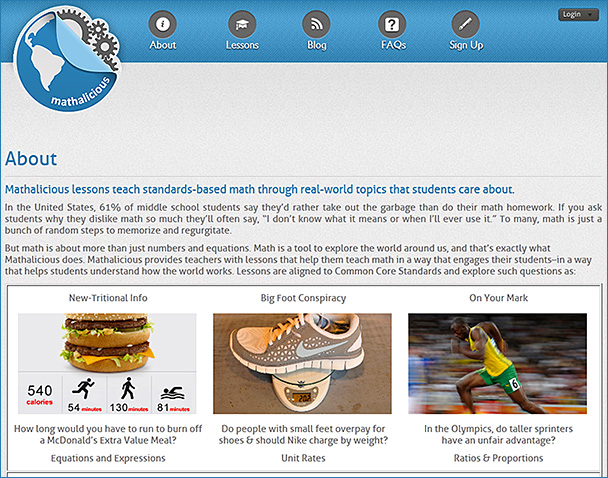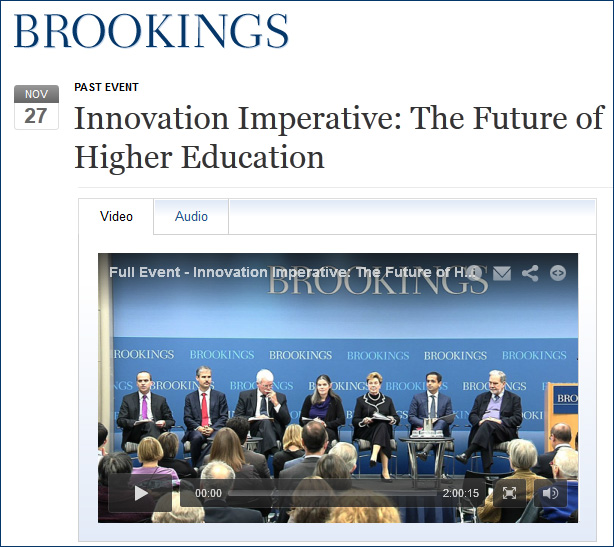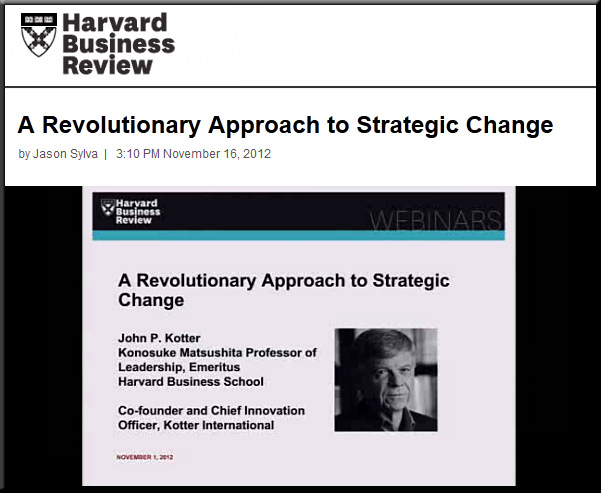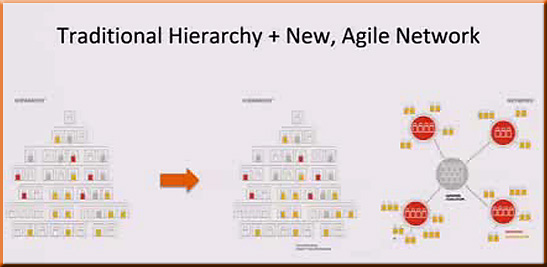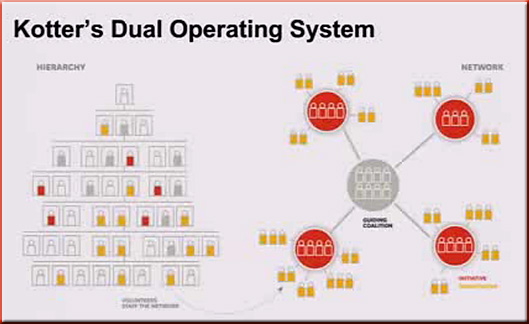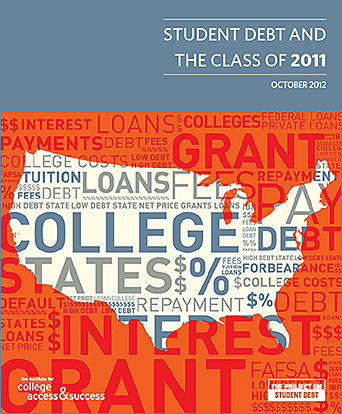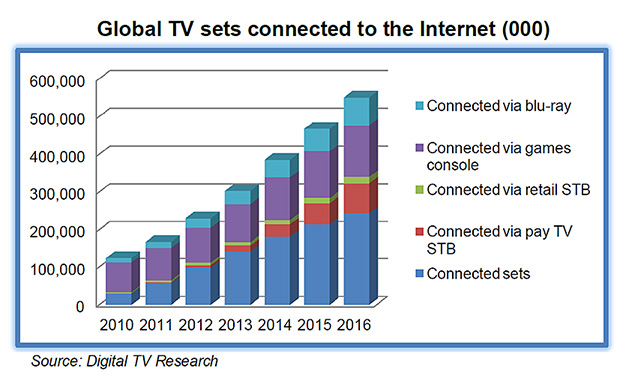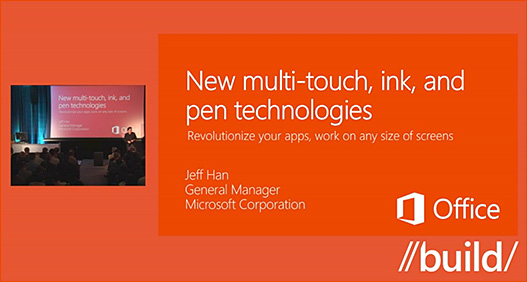See:
- Revl comes out of beta, promises to help students and other job seekers get noticed — from techcrunch.com by Anthony Ha
. - How to clean up your online presence and make a great first impression — from lifehacker.com
. - How companies will Googlefy your career — from hbr.org by Michael Schrage
. - ‘Transdisciplinarity’: A future workforce skill — from talentmgt.com by James M. Fraleigh
People who can correlate material from diverse knowledge bases and extract tangible results will be prized in the workplace of the future.
.
- 10 skills vital for success in tomorrow’s workplace — from edlinktuition.com by James M. Fraleigh
Rising workplace automation. Greater dependence on social technologies. Increased longevity. These and other disruptive forces will fundamentally transform the nature of work in the next 10 years. Future Work Skills 2020, a new report by the Institute for the Future for Apollo Research Institute, examines how technological and societal trends will affect career development, workforce advancement and the need for lifelong learning. Workers must continuously reassess their education and competencies to match organizational demands. The Future Work Skills 2020 report presents 10 workplace skills that can help workers stay employed in this ever-shifting employment landscape.
From DSC:
Here’s a developing job: Web-based proctor
- In online exams, Big Brother will be watching — from technologyreview.com by Brian Bergstein
How can you tell if an online student has done the work? That’s where webcam proctoring comes in.
.
Addendums:
- Shake-ups in the “C Suite”: New corporate leaders with new skills are on the way. Corporate futures will be shaped by leaders adept in social networking, content management, data mining, and data meaning. Look for such job titles as Earned Media Officer, Chief Content Officer, Open-Source Manager, Chief Linguist, and Chief Data Scientist. —Geoffrey Colon, “Shakeups in the ‘C Suite’: Hail to the New Chiefs,” World Trends & Forecasts, July-Aug 2012, pp. 6-7
.
- 10 companies that are radically changing the way we work — from businessinsider.com by Max Nisen
. - The global talent chase: China, India, and U.S. vie for skilled workers — from The Futurist by Edward Gordon
. - indeed.com
. - 7 things you need to know to win the digital job hunt — from onlinecollegecourses.com

.

.
From DSC, some examples:
- Unbundling and Unmooring: Technology and the Higher Ed Tsunami — from educause.org by Audrey Watters
- Unbundling Higher Education | From the Bell Tower –– from lj.libraryjournal.com by Steven Bell
Excerpt (emphasis DSC):
Recent events in higher education suggest a new trend — earning degrees by the course from multiple providers. Are we looking at the iTunes model of unbundled higher ed? Call it alt-HE. - Napster, Udacity, and the Academy — from Clay Shirky
Excerpt:
Once you see this pattern—a new story rearranging people’s sense of the possible, with the incumbents the last to know—you see it everywhere. First, the people running the old system don’t notice the change. When they do, they assume it’s minor. Then that it’s a niche. Then a fad. And by the time they understand that the world has actually changed, they’ve squandered most of the time they had to adapt.
.
It’s been interesting watching this unfold in music, books, newspapers, TV, but nothing has ever been as interesting to me as watching it happen in my own backyard. Higher education is now being disrupted; our MP3 is the massive open online course (or MOOC), and our Napster is Udacity, the education startup.
…
But who faces that choice? Are we to imagine an 18 year old who can set aside $250K and 4 years, but who would have a hard time choosing between a residential college and a series of MOOCs? Elite high school students will not be abandoning elite colleges any time soon; the issue isn’t what education of “the very best sort” looks like, but what the whole system looks like.
Excerpt:
With the public’s continued focus on value and affordability, higher education finds itself at a critical juncture. Cost pressures and increased global demand for access have given rise to innovations that have unleashed new delivery models into the education marketplace. Such innovation is required if universities are to thrive, compete, and bring new relevance and meaning to the value of college in the 21st century.
Also see:
- Americans believe higher education must innovate — from Northeastern News
- President: Witt must adapt to survive — from springfieldnewssun.com by Tom Stafford
Excerpt:
Liberal arts colleges that ignore market realities “absolutely won’t exist in the next decade,” Wittenberg University President Laurie M. Joyner told Springfield Rotarians on Monday. But the practical or applied liberal arts education that she predicts can sustain Wittenberg will encourage deeper connections with Springfield, she said while speaking at the Hollenbeck-Bayley Conference Center, because “our students learn better when dealing with real-world problems.” A shrinking pool of price-sensitive high school graduates has combined with a bad economy to produce “the equivalent of a perfect storm for some of us,” said Joyner, who succeeded Mark Erickson on July 1. - Surviving disruption — from hbr.og by Maxwell Wessel and Clayton M. Christensen
Excerpt:
…to meet disrupters with disruption of their own, but also to guide their legacy businesses toward as healthy a future as possible. - Sanjay Sarma appointed as MIT’s first director of digital learning — from MIT by Steve Bradt
Mechanical engineering professor will shepherd efforts to integrate elements of online education into traditional MIT courses.
From DSC:
Experimentation. Innovation. Experimentation. Innovation. Fail. Fail. Succeed. Fail. Succeed. Fail.
The education giant adapts — from MIT Technology Review by Jessica Leber
Pearson is the world’s largest book publisher. Now it wants to be a one-stop shop for digital education.
Excerpt:
Pearson pulled this off with a decade-long string of acquisitions that helped it shift its emphasis from selling books to selling education services. The London-based company styles itself as the “world’s leading learning company,” even if that learning isn’t delivered through traditional books. These days, Pearson is more like an IT department for classrooms and schools. It sells technology infrastructure, software, and consulting services to schools—services that in turn help deliver the vast stock of textbook content Pearson owns. The company says its revenue from online content and services will surpass those of the traditional publishing business this year.
From DSC:
I congratulate Pearson on reinventing itself. The words of Steve Jobs ring in my mind…something about cannibalizing one’s business before someone else does it for you. Several other words and phrases come to my mind after seeing the above article — that regular readers of this blog and my archived website will instantly recognize:
- Dangers of the status quo
- Staying relevant
- Survival
- Disruption/change
- New business models
- Game-changing environment
- Using teams of specialists
Also relevant here/see:
- Three big changes ahead for higher education — from onlinelearninginsights.wordpress.com
From DSC:
Mr. Rob Bobeldyk and I were brainstorming last week about the need to create A Center for Innovation — a smaller organization within our overall organization — that can be far more nimble and responsive. Such a Center could be:
- Constantly pulse-checking the relevant landscapes (technological, pedagogical, business models, other)
- Researching potential approaches
- Experimenting
- Innovating
- Failing
- Succeeding some of the time — and handing off/transitioning the projects that gain traction to others in the larger organization (which may require building some new groups and/or departments at that point)
As I discovered HBR’s interview with John Kotter today, I felt our idea/direction/brainstorming is heading in the right direction!
.
That is, we are trying to keep the plane in flight while making some significant changes. Put another way, we are trying to keep the bread and butter in tact while experimenting with new business models and/or new products and services.
Kotter’s “Dual Operating System” affirms that a new/smaller/more nimble organization is appropriate. Here are some graphics of Kotter’s “dual operating system”:
.
.
.
The work of Christensen, Horn, and Johnson is highly-relevant here as well:
- Disrupting Class
- Disrupting College
- The Innovator’s Dilemna
Addendums on 11/20/12:
.
From DSC:
I wonder how MOOCs focused on language will go…? It could be great to practice a language from folks all around the world — or will it be chaotic? Different accents. Real-world speaking and listening. Real world conflict, perhaps, as well. But it seems like there could be some effective learning going on — at least “on paper”. I wonder, too, if 1/2 of the time folks could speak one language — and would be the students during that part of the class — while the other 1/2 of the time they speak another language — and would be the “teachers.”
.
And for yet another item on innovation within higher ed! Whew!
- Excelsior College and three California Community Colleges offer credit for professor-less MOOC — from online colleges.com by Alex Wukman
Excerpt:
Excelsior College has partnered with San Diego City College, San Diego Miramar College, and Santa Rosa Junior College to offer credit for a professor-less, or mechanical, massive open online course (MOOC). The course, an introduction to statistics class, is being developed by the 20 Million Minds Foundation and the online learning community OpenStudy.
College crackup and the online future — from bloomberg.com by Mark C. Taylor
.

Illustration by Keith Shore
Excerpt:
In the coming decade, emerging technologies will thoroughly transform higher education. Although distance learning and computer-assisted education have been around since the 1960s, financial pressures are forcing institutions to develop aggressive online programs.
…
These practical considerations shouldn’t overshadow one of the most promising innovations that online education will bring: The very structure of knowledge will change.
…
As students mix and match courses online, pressure will increase for professors to develop classes that integrate different approaches and disciplines.
.
.
Also see:
- Business model innovation: A blueprint for higher education — from businessinnovationfactory.com by Christine Flanagan, BIF’s Student Experience Lab Director. This article is featured in the December 2012 issue of the EDUCAUSE Review.
- Designing colleges for more than just connectivity — from fastcoexist.com by Maddy Burke-Vigeland
From DSC:
Creating “Innovation Labs” within each institution of higher education sounds like a good idea to me…we can experiment with things at smaller scales and see what works and what doesn’t.
Also see:
Take a lesson from Apple: A strategy to keep customers in your ecosystem — from forbes.com by Alonzo Canada
Excerpt (emphasis DSC):
1. Set focused, strategic targets.
2. Create a portfolio of experiments. Like Apple or Mercedes Benz, once you have focused, strategic targets set, create a series of experiments. A general rule of thumb is the 7-2-1 rule: one experiment should be big and relatively safe. Two experiments should be slightly more risky and moderately sized. Then seven experiments should be highly risky and low cost. These experiments can be scaled accordingly across teams, business units, and the entire company. 3M is one of the first companies to mandate that its employees spend 20% of their time thinking up blue sky ideas beyond its current lines of business and this is how Post-It Notes were born. Art Fry, an engineer at 3M wanted to find a better way to manage notes in his hymnal on Sundays at church.
3. Leverage learnings to inform new experiments.
Average student debt climbs to $26,600 for Class of 2011 — from The Institute for College Access & Success
Report, website include state-by-state and campus-by-campus debt levels for 2011 graduates
Excerpt:
TICAS recently released Student Debt and the Class of 2011, our seventh annual report on the debt carried by new college graduates. Hundreds of news outlets around the country have already run stories featuring our findings, including The New York Times, USA Today, and PBS NewsHour.
We found that two-thirds of college seniors who graduated from public and private nonprofit four-year schools in 2011 carried an average of $26,600 in student loan debt, up 5% from the previous year. Private student loans comprised about one-fifth of the Class of 2011’s debt. Meanwhile, unemployment for recent graduates dipped from last year’s peak of 9.1% but remained high at 8.8% (still less than half the unemployment rate for young adults with only a high school diploma).
The report also shows that average student debt levels vary widely by state as well as by college. To view debt levels for all 50 states plus the District of Columbia and more than 1,000 individual U.S. colleges and universities, visit our companion interactive map.
Read the press release
Read the report
Use the interactive map
.
From DSC:
The above items support the need for greater experimentation within higher ed.
Also see:
- How Online Courses Can Form a Basis for On-Campus Teaching — from Daphne Koller
- Stretching the higher education dollar — and also this page — from aei.org by Andrew P. Kelly, Kevin Carey
EDUCAUSE’s new Breakthrough Models Academy — from nextgenlearning.org by Julie Little
Excerpt:
Across today’s news outlets are stories on the critical issues facing higher education. In the Huffington Post last June, Wagner College president Richard Guarasci summed those issues: “The crisis facing American higher education is rooted in a series of challenges around access, cost, affordability, learning outcomes and institutional priorities.” Guarasci went on to describe the depth and complexity of each of these challenges. Solutions to these challenges reside at the nexus of innovation and change catalyzed by technology. However, critical to ideating and advancing these solutions are knowledgeable, creative, visionary leaders.
Yahoo! and Samsung form multi-year partnership to deliver Interactive TV — from dailyfinance.com by Business Wirevia The Motley Fool
Partnership to provide real-time, enhanced entertainment and advertising to homes across the United States
Excerpt:
SUNNYVALE, Calif. & RIDGEFIELD PARK, N.J.–(BUSINESS WIRE)– Yahoo! (NAS: YHOO) and Samsung today announced an expanded multi-year partnership to integrate Yahoo!’s Broadcast Interactivity platform into Samsung 2012 Smart TVs. Yahoo! Broadcast Interactivity, powered by its automatic content recognition (ACR) technology, SoundPrintTM, will be deployed in Samsung’s SyncPlus platform, enabling new opportunities for intelligent content discovery, advertising and engagement, bringing an unprecedented level of interactivity in the living room.
.
From DSC:
Another steps towards:
![The-Living-Class-Room-Daniel-S-Christian---July-2012 The Living [Class] Room -- by Daniel Christian -- July 2012 -- a second device used in conjunction with a Smart/Connected TV](http://danielschristian.com/learning-ecosystems/wp-content/uploads/2012/07/The-Living-Class-Room-Daniel-S-Christian-July-2012.jpg)
.
A fifth of TV sets connected to the Internet by 2016 — from digitaltvresearch.com
.
.
Welcome to Star Scholar U., where a personal brand is the credential — from The Chronicle by By Jeffrey R. Young
.
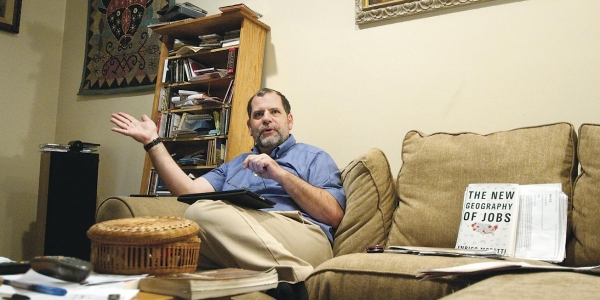
Keri Rasmussen for The Chronicle
Tyler Cowen, an economics professor at George Mason U., helped build an online-education site, Marginal Revolution U, based on a blog he runs with Alex Tabarrok. “In part we did it just to show it could be done—that you can have a Web site which looks nice and works,” Mr. Cowen said.
Excerpt:
A new kind of university has begun to emerge: Call it Star Scholar U.
Professors with large followings and technical prowess are breaking off to start their own online institutions, delivering courses with little or no backing from traditional campuses.
Founding a university may sound dramatic, but in an era of easy-to-use online tools it can be done as a side project—akin to blogging or writing a textbook. Soon there could be hundreds of Star Scholar U’s.
.
5 perspectives on the future of the human interface — from techcrunch.com by Alex Williams
Excerpt:
The next generation of apps will require developers to think more of the human as the user interface. It will become more about the need to know how an app works while a person stands up or with their arms in the air more so than if they’re sitting down and pressing keys with their fingers.
Also see:
.
Rethinking carrots: A new method for measuring what players find most rewarding and motivating about your game — from gamasutra.com by Scott Rigby, Richard Ryan
Excerpt:
The Player Experience of Need Satisfaction model (PENS) outlines three basic psychological needs, those of competence, autonomy, and relatedness, that we have demonstrated lie at the heart of the player’s fun, enjoyment, and valuing of games. By collecting players’ reports of how these needs are being satisfied, the PENS model can strongly and significantly predict positive experiential and commercial outcomes, in many cases much more strongly than more traditional measures of fun and enjoyment. And despite the simplicity of the model conceptually, it shows promise as a “unified theory” of the player experience by demonstrating predictive value regardless of genre, platform, or even the individual preferences of players.
.
Pearson project will let professors mix free and paid content in e-textbooks — from The Chronicle by Alisha Azevedo
Excerpt:
Pearson, a major textbook publisher, continued its push into digital education on Monday by introducing a service that allows instructors to create e-textbooks using open-access content and Pearson material.
.
A river of data — from educationnext.org by Bror Saxberg
Making the learning experience more effective
.
How should teaching change in the age of Siri? –– from MindShift
Excerpt:
Short of banning smartphones (a short-term solution, at best), the evolution of artificial intelligence services like Siri means that there will be a shift from a focus on finding the answer as the endpoint to a greater focus on analysis. You have the answer, but so what? What does that answer mean in a real-life situation?
.
Degreed launches crowdfunding campaign for reimagined ‘digital diploma’ — from gigaom.com by Ki Mae Heussner
San Francisco startup Degreed is challenging the traditional college diploma with an online service that tracks and scores educational achievements from established institutions as well as new online learning platforms. Ahead of a public launch in 2013, Degreed this week began a crowd funding campaign.
.
A capitalist’s dilemma, whoever wins on Tuesday — from the New York Times by Clayton Christensen
Excerpt (emphasis DSC):
In a way, this mirrors the microeconomic paradox explored in my book “The Innovator’s Dilemma,” which shows how successful companies can fail by making the “right” decisions in the wrong situations. America today is in a macroeconomic paradox that we might call the capitalist’s dilemma. Executives, investors and analysts are doing what is right, from their perspective and according to what they’ve been taught. Those doctrines were appropriate to the circumstances when first articulated — when capital[From DSC: or from an educational perspective, we could use the word information] was scarce.
But we’ve never taught our apprentices that when capital is abundant and certain new skills are scarce, the same rules are the wrong rules. Continuing to measure the efficiency of capital prevents investment in empowering innovations that would create the new growth we need because it would drive down their RONA, ROCE and I.R.R.
.
Gartner sees 821M unit smart device mkt in 2012; 1.2B 2013 — from forbes.com by Eric Savitz
.
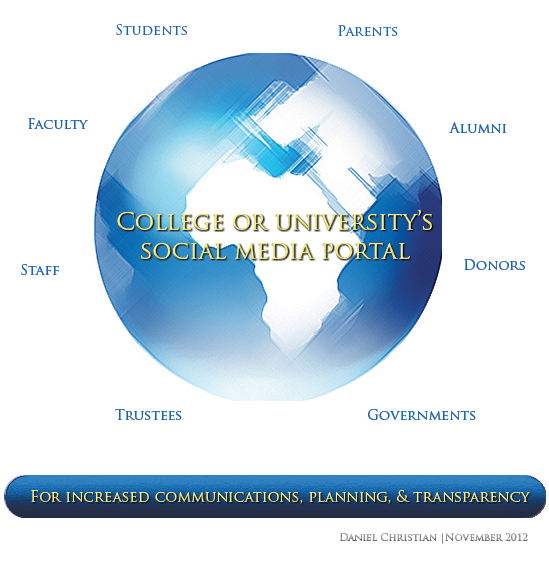
From DSC:
.
Could we use social media/tools in order to get input from all of the constituencies of a
college or university? Such input could be used to create innovative ideas,
establish buy-in, and build future strategic direction/vision.
What would that look like? Work like?
I wasn’t sure where to put the workplace here…but certainly that is also a key piece of our future.
.
Excerpt:
Agarwal believes that education is about to change dramatically. The reason is the power of the Web and its associated data-crunching technologies. Thanks to these changes, it’s now possible to stream video classes with sophisticated interactive elements, and researchers can scoop up student data that could help them make teaching more effective. The technology is powerful, fairly cheap, and global in its reach. EdX has said it hopes to teach a billion students.
.
Which brings me to this graphic:

Also see:
- One man, one computer, 10 million students: How Khan Academy is reinventing education — from Forbes.com by Michael Noer
The article, “Technology changing how students learn, teachers say,” reminds me of the graphic below. It appears that teachers now have a definite answer to the question I was asking back in June 2010:
.
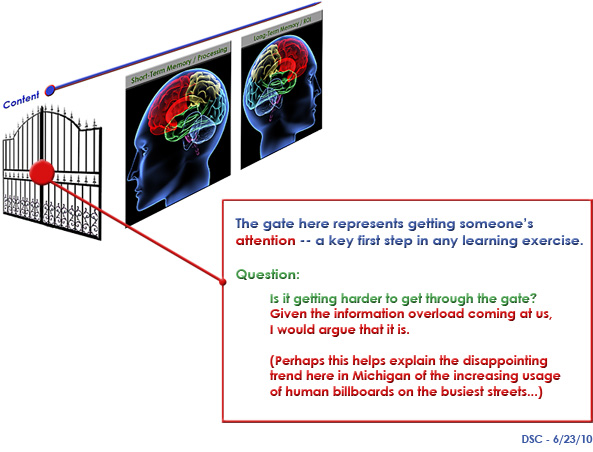
Excerpt (emphasis DSC):
Teachers who were not involved in the surveys echoed their findings in interviews, saying they felt they had to work harder to capture and hold students’ attention.
“I’m an entertainer. I have to do a song and dance to capture their attention,” said Hope Molina-Porter, 37, an English teacher at Troy High School in Fullerton, Calif., who has taught for 14 years. She teaches accelerated students, but has noted a marked decline in the depth and analysis of their written work.
Bottom line:
Like so much in life, we have very little control of most things. Students are changing and we cannot control that situation — nor should we seek to. Why? Because most people I know — including myself — do not like to be controlled. We can and should attempt to pulse check these sorts of changes, plan some experiments around them, and then see and report on what works and what doesn’t work. This all relates to something I saw on earlier today on Twitter from Anya Kamenetz (@anya1anya):
If you declare a no-media classroom, you better be damn fascinating.
Also, a relevant quote:
The biggest problem area for teachers is students’ attention span, with 71% saying saying entertainment media use has hurt students either “a lot” (34%) or “somewhat” (37%) in that area.
— from Children, Teens, and Entertainment Media: The View From The Classroom
A Common Sense Media Research Study – NEW REPORT
November 1, 2012
Download the full report









